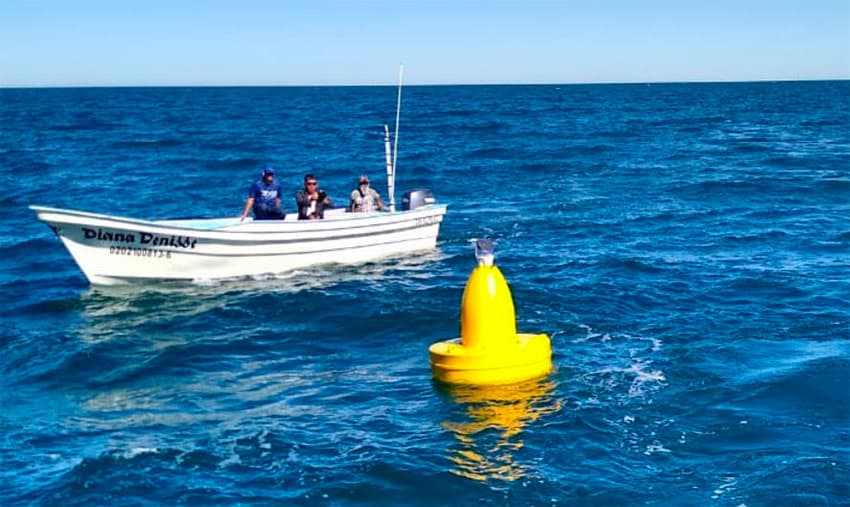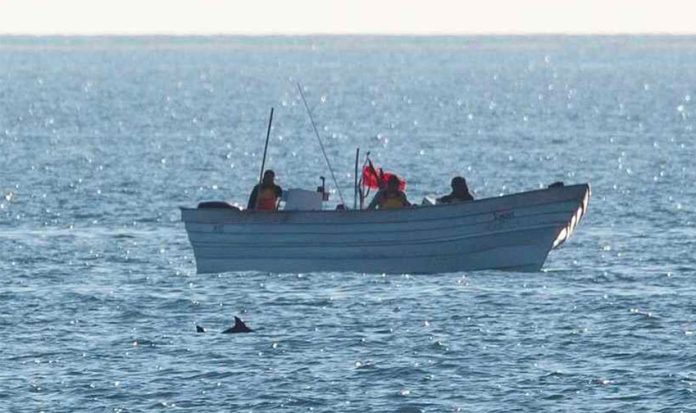Scientists have photographed an endangered vaquita porpoise swimming alongside a fishboat in an area of the upper Gulf of California where fishing is not allowed.
It was the same area in which a dead vaquita was photographed in a gillnet in March.
“Unfortunately, these boats are exactly where we saw the remaining vaquitas on our last trip,” said Octavio Carranza, captain of the Sea Shepherd Conservation Society vessel Farley Mowat.
The scientists reported that on October 17 they saw over 70 fishboats in the 150-square-kilometer zero-tolerance zone, where the use of gillnets for shrimp, milkfish and corvina is prohibited. The federal government has been frequently criticized in recent years for failing to enforce the fishing restriction, intended to prevent the vaquita from becoming bycatch of other species.
A measure intended to encourage fishermen not to fish was the payment of a government subsidy, but no monies have been paid in the last 11 months.

Ramón Castro, president of a San Felipe-based fishermen’s organization, said fishermen were in the protected area as a result of the lack of attention and dialogue from the federal government.
The sentiment was echoed by Carlos Tirado, leader of a regional federation of fishermen’s cooperatives.
“We’re stuck between a rock and a hard place: between organized crime . . . and the pressure put on the commercial fishing sector by the government,” Castro said. “Those most affected are the organizations that follow the rules. Those who benefit most are the illegal fishermen.”
Tirado demanded that the federal government attend to the matter immediately.
Fishermen in the region also go after totoaba, another endangered species whose swim bladder fetches high prices in Asia, so high that organized crime is believed to be trafficking in the product. Again, the vaquita is often unintended bycatch, picked up in the totoaba nets.
Although the fishboat photographed with the vaquita put it in danger, the fact that one was photographed is a positive sign, according to the director of marine mammal investigations for the National Protected Areas Commission (Conanp), Lorenzo Rojas-Bracho.
“There are still vaquitas as of now, [and] I hope that we can keep these few alive and protect them exactly where they are,” he said. “These types of expeditions are key for photographic identification efforts, which provide the best options for orienting our means of protection.”
Earlier this week, the Sea Shepherd Conservation Society and the La Paz Whale Museum, along with federal officials and local fishermen, installed buoys in the area to mark the boundaries of the prohibited zone.
The buoys will facilitate the inspection and surveillance efforts by environmental authorities and other organizations, and help fishermen avoid the area.
Following recommendations from the International Committee for the Recuperation of the Vaquita (CIRVA), the demarcated zone covers 288 square kilometers, including the restricted area.
Scientists estimated earlier this year that only 10 vaquita porpoises remain. The species is found only in the upper Gulf of California.
Sources: Milenio (sp)
